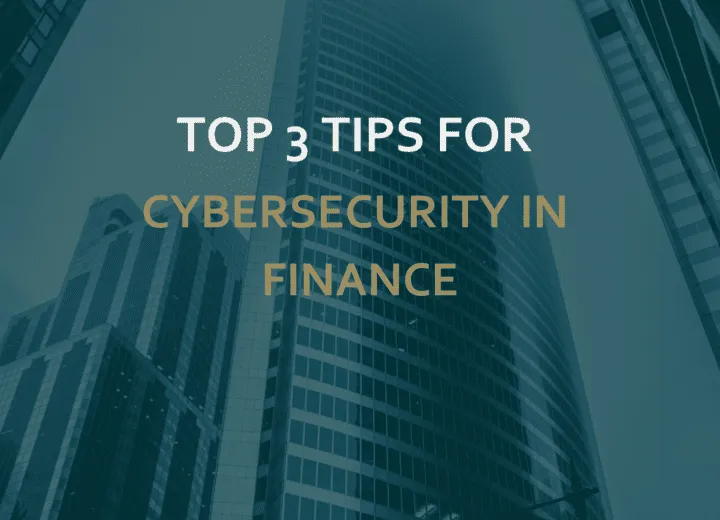
The recent advances in internet banking such as mobile banking, instant payments and payment apps all invariably increase the finance industry’s attack landscape and introduce new vulnerabilities. With the exponential growth of malicious acts by cybercriminals, it’s becoming increasingly important to prioritize cybersecurity in the finance industry. Today, the average financial firm experiences upwards of 125 cyber-attacks each year, costing the industry millions of dollars a year.
Besides the disconcerting effects of security and information being breached, cyberattacks on finance systems can also affect the financial well-being and safety of clients. Financial service providers such as banks, credit card companies, and investment firms are entrusted with the personal information of every customer and client. Unfortunately, many financial institutions are not allocating enough resources to protect their bottom line. However, without a strong cybersecurity plan in place, the cost in revenue and even clients’ financial lives will be even higher.
The Ramifications of Attacks in Finance
There are several ways that cyberattacks can affect financial institutions. First, cybercriminals often steal and sell clients’ financial and personal information because they can make a quick profit on the dark net. Another big problem for finance is ransomware, which is exacerbated in the financial realm. Finance organizations are often willing to pay the ransom because cyber criminals have locked down client financial information and critical back-office systems. Finally, there are many financial devices that are connected to the internet that can be susceptible to tampering.
The problem is bigger than ever. More than 93% of finance organizations have experienced a data breach over the past three years, and 57 percent have had more than five data breaches during the same time frame. Woefully inadequate security practices, weak and shared passwords, plus vulnerabilities in code, exposes finance institutions to perpetrators intent on hacking treasure troves of client data.
Combating Cyber Attacks on Finance
There are three things that finance organizations must prioritize if they are going to prevent this proliferation of cyberattacks.
Increase Visibility with Consolidation
Although finance institutions might think they are doing the right thing in monitoring their on-premises networks to ensure clients’ safety, what they can’t see can hurt them. With more assets to secure, confidence in security goes down, and multiple management consoles obscure visibility. Finance institutions must be able to monitor every endpoint, gaining insight into the entire network, which includes remote assets.
To this end, our Difenda Managed Extended Detection and Response (MXDR) service with 24/7/365 endpoint visibility will give financial institutions the security they need with a company they can trust.
Set Up Intelligent Early Warning Systems with Microsoft Security
If you want to mitigate cyberattacks or thwart them entirely, you need a well-defended system that is monitored 24/7/365. The longer a threat actor has access to the system, the longer their activities will go unnoticed, and the more damage they can do.
Difenda meets you where you are on your security journey and can create a roadmap from where you are today to where your need to be to meet business goals, including compliance.
Make Security and Awareness Training Mandatory for all Employees
When it comes to security, every single person needs to be involved and aware, or else cybercriminals can sneak their way in via the one open door. However, according to Osterman’s Research, a full 24% of finance workers have not received any security awareness training at their workplace. Because a finance organization’s online presence is so vast, there are many places where cyberattacks can occur.
All employees should be aware of viruses, malware, and ransomware issues, as well as phishing and social engineering problems. Phishing scams account for 90% of cyberattacks. Along with these elements, employees should receive training on how to create safe internet habits, as well as password education and training through Security Awareness Training.
Proactive Preparation
With the financial industry being a prime target for cybercriminals due to the sensitive data they possess, it’s important for finance organizations to be proactive in their cybersecurity measures. This includes regularly updating their systems and software, implementing strong password policies, and providing cybersecurity training for all employees.
When working with important personal information, mortgages, and investments, the situation is urgent. Cybersecurity in finance needs to be taken seriously and organizations must be proactive in their approach. With cyberattacks on the rise, it’s not a matter of if an attack will happen, but when. By being proactive and taking the necessary steps to protect themselves, financial organizations can avoid devastating financial and reputational damage.




